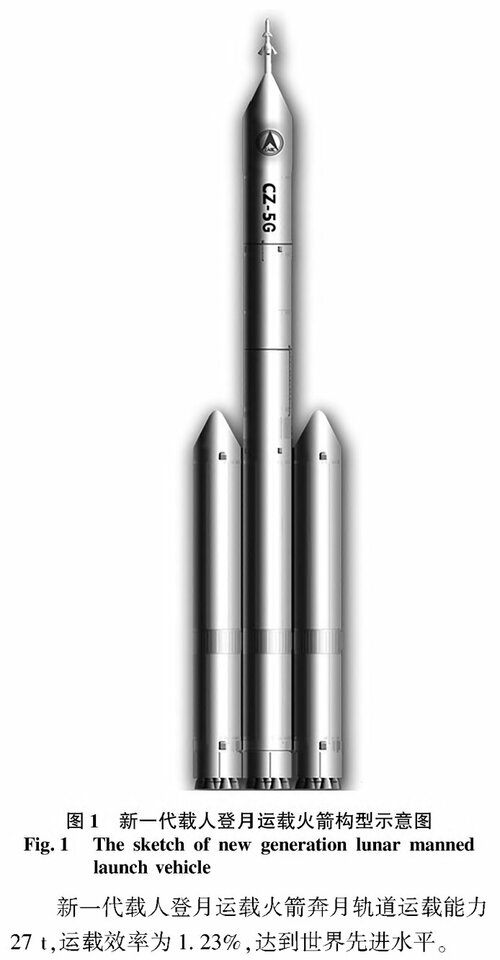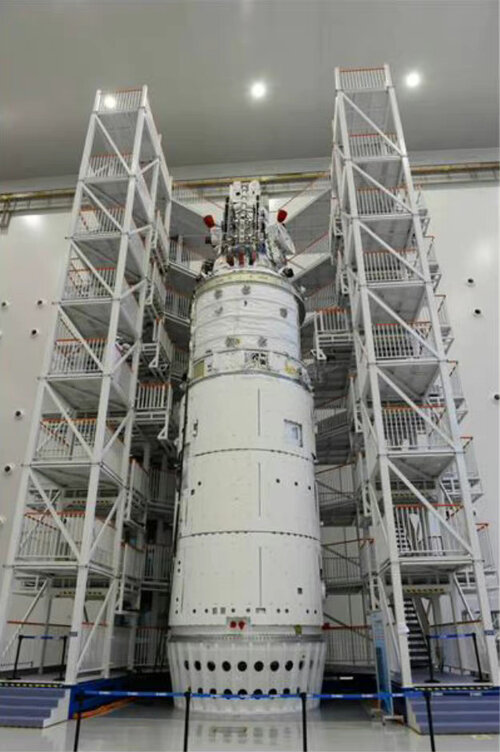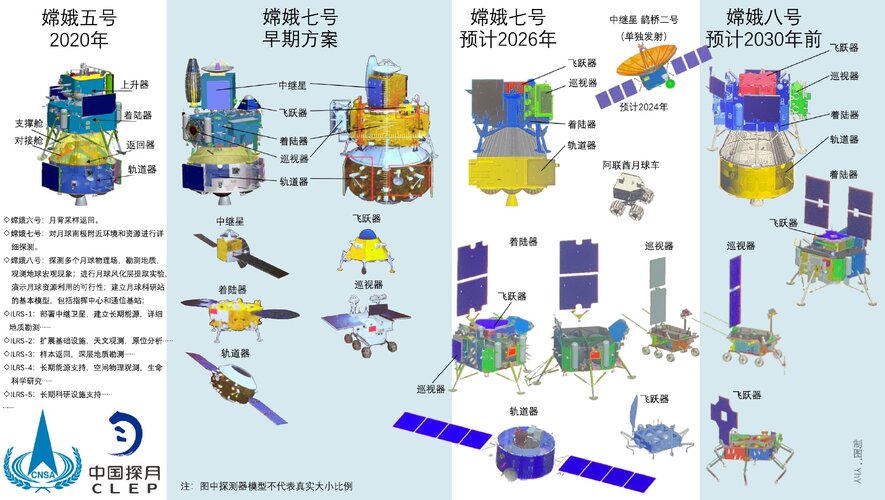You are using an out of date browser. It may not display this or other websites correctly.
You should upgrade or use an alternative browser.
You should upgrade or use an alternative browser.
Chinese Space Program
well ,I make a mistake,there is a plan to replace LOX engine for the Long March 2D rocketWhat do people think of China’s possible approach to creating a reusable launcher that of revamping an existing booster rather than going for a clean sheet design like Space X?
Sina Visitor System
weibo.com
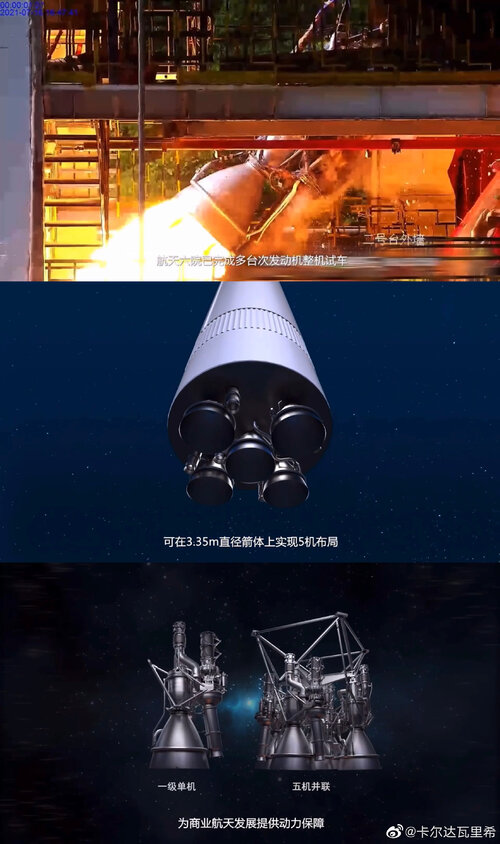
Last edited:

China to help UAE land rover on Moon’s surface | The National
The two countries signed an agreement on Friday

Chang'e 7
- Joined
- 21 January 2015
- Messages
- 12,150
- Reaction score
- 16,353
View: https://twitter.com/cnsawatcher/status/1571388086029885441
View: https://youtu.be/srjf8JG6eZo
According to the MoU, UAE’s Rashid II lunar rover will be on board CNSA’s Chang’e 7 lunar probe. This explained why Chang’e 7 mission was deferred to 2026. Full HD:
- Joined
- 21 January 2015
- Messages
- 12,150
- Reaction score
- 16,353
The next cargo spacecraft to resupply China Space Station, Tianzhou-5, has arrived at Wenchang for launch on Nov. 06. It also carries a 4U cubesat CAS-10 (XW-4) and will deploy on ~Dec. 15.
View: https://twitter.com/CNSpaceflight/status/1571508906068963333
siegecrossbow
I really should change my personal text
- Joined
- 12 March 2012
- Messages
- 707
- Reaction score
- 2,106
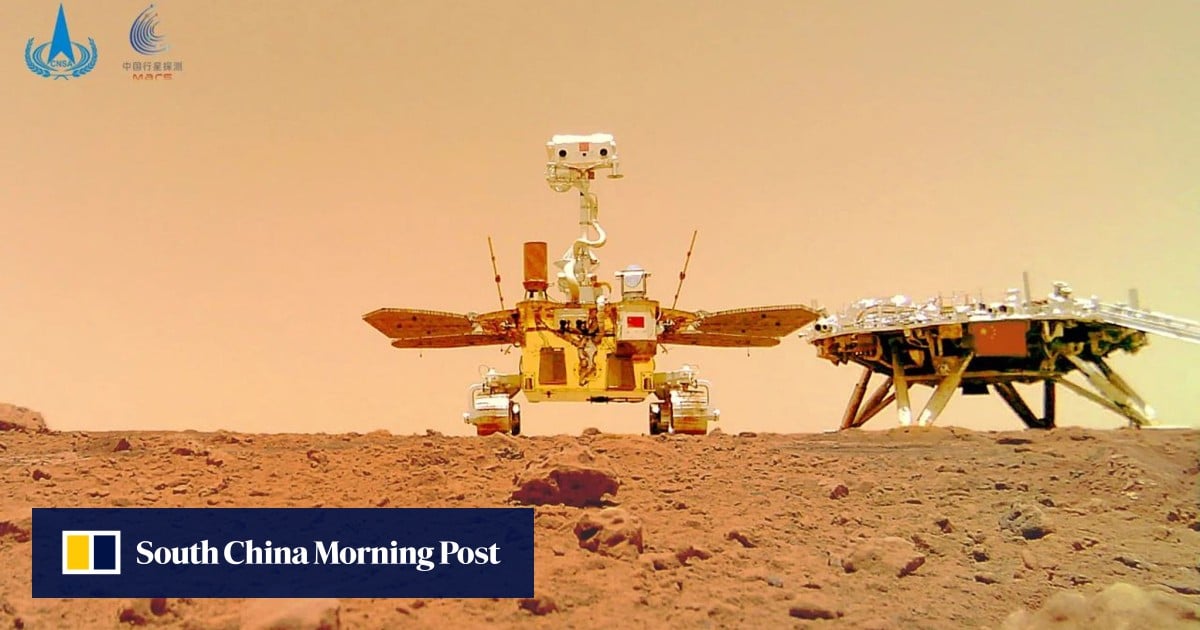
China’s Tianwen 1 Mars mission wins top international aerospace award
Team recognised for making an ‘essential contribution to a deeper understanding of Mars and the solar system’.
- Joined
- 9 October 2009
- Messages
- 21,973
- Reaction score
- 13,626

NASA chief says cooperation with China in space is up to China
Administrator calls for openness, but NASA is restricted from bilateral engagements.
- Joined
- 9 October 2009
- Messages
- 21,973
- Reaction score
- 13,626

Rocket doubleheader: China launches 2 satellite missions 40 hours apart (video)
The nation's busy spaceflight year continues.
- Joined
- 21 January 2015
- Messages
- 12,150
- Reaction score
- 16,353
Rather late posting this.
China's Shenzhou-14 astronauts complete 2nd spacewalk - See highlights!
View: https://youtu.be/-EOMuzVpgWs
China's Shenzhou-14 astronauts complete 2nd spacewalk - See highlights!
- Joined
- 21 January 2015
- Messages
- 12,150
- Reaction score
- 16,353
The first 17 countries to join the "Circle of Friends" of China's space station will involve a wide range of research fields. #天宫is ready for docking assembly. The first batch of 17 countries that join #China 's #spacestation will cover a wide range of research. #TianGong is ready for final assembly. #shenzhou14 #tech #aerospace #space #Astronauts #News..
View: https://twitter.com/Daozhu2Q/status/1575301150298890241
- Joined
- 9 October 2009
- Messages
- 21,973
- Reaction score
- 13,626
From September 22nd:


Taikonauts in orbit salute China's manned space program on 30th anniversary
Beijing (XNA) Sep 22, 2022 - The Shenzhou-XIV taikonauts, who are aboard the Tiangong space station, gave an off-Earth salute to all participants in China's 30-year manned space program on Wednesday. In a celebratory vide
www.spacedaily.com
- Joined
- 21 January 2015
- Messages
- 12,150
- Reaction score
- 16,353
View: https://twitter.com/cnspaceflight/status/1576422911807614978
Isn't this cool? The HD footage of Wentian Laboratory Module relocation!
CMSA
- Joined
- 21 January 2015
- Messages
- 12,150
- Reaction score
- 16,353
China is planning an ambitious two-for-one shot to the outer planets with a pair of spacecraft to launch for Jupiter and Uranus around 2030.
The mission will be named Tianwen 4 and will see a larger probe destined for Jupiter and smaller spacecraft to be sent to make a flyby of distant Uranus.

China wants to probe Uranus and Jupiter with 2 spacecraft on one rocket
Tianwen 4 to target Jovian moon Callisto and ice giant flyby.
Tianwen-4: China to launch a combined pair spacecraft towards Jupiter via Venus and Earth flybys. One will study the Jovian system and enter orbit around Callisto, the smaller will use a gravity assist to head for a flyby of Uranus. Launch ~ 2030. Asteroid flyby also included.
View: https://twitter.com/AJ_FI/status/1572711299942940672
- Joined
- 21 January 2015
- Messages
- 12,150
- Reaction score
- 16,353
The HD footage of Wentian Laboratory Module relocation!
View: https://twitter.com/CNSpaceflight/status/1576422911807614978
View: https://twitter.com/CNSpaceflight/status/1576422911807614978
- Joined
- 21 January 2015
- Messages
- 12,150
- Reaction score
- 16,353
- Joined
- 21 January 2015
- Messages
- 12,150
- Reaction score
- 16,353
Updated schedule of missions to China Space Station in 2022:
Mengtian #CZ5B-Y4 NET OCT.31
Tianzhou-5 #CZ7-Y6 NOV.06
Shenzhou-15 #CZ2F-Y15 NOV.26
View: https://twitter.com/CNSpaceflight/status/1578751792296271872
Mengtian #CZ5B-Y4 NET OCT.31
Tianzhou-5 #CZ7-Y6 NOV.06
Shenzhou-15 #CZ2F-Y15 NOV.26
View: https://twitter.com/CNSpaceflight/status/1578751792296271872
- Joined
- 21 January 2015
- Messages
- 12,150
- Reaction score
- 16,353
TAKHISS
ACCESS: Confidential
- Joined
- 4 March 2009
- Messages
- 61
- Reaction score
- 39
China 's New Space Timetable
Wu Weiren ( Chief Designer of China Lunar Exploration Project)
In the first stage, by 2035, landmark achievements will be made in heavy carrier rockets, the construction of a new generation of space infrastructure, the construction of space stations, the lunar exploration project, manned lunar landing and planetary exploration.
In the second stage, by 2045, landmark achievements will be made in manned landing on Mars, international lunar research station, interplanetary crossing, space-to-space transportation, etc., becoming one of the leaders in the world 's space development.
Wu Weiren ( Chief Designer of China Lunar Exploration Project)
In the first stage, by 2035, landmark achievements will be made in heavy carrier rockets, the construction of a new generation of space infrastructure, the construction of space stations, the lunar exploration project, manned lunar landing and planetary exploration.
In the second stage, by 2045, landmark achievements will be made in manned landing on Mars, international lunar research station, interplanetary crossing, space-to-space transportation, etc., becoming one of the leaders in the world 's space development.
- Joined
- 21 January 2015
- Messages
- 12,150
- Reaction score
- 16,353
China’s mystery spaceplane has now been in orbit for over 80 days and recently raised the perigee of its orbit.

 spacenews.com
spacenews.com

China’s spaceplane raises orbit and national funding - SpaceNews
A spaceplane launched by China in August has performed an orbit-raising maneuver and recently secured new funding to promote new modes of transportation.
- Joined
- 21 January 2015
- Messages
- 12,150
- Reaction score
- 16,353
View: https://twitter.com/cnsawatcher/status/1584763615722508288
View: https://twitter.com/wulei2020/status/1584920727458705408Ready to go. Long March 5B (CZ5B) Y4 rocket, which carries Mengtian laboratory cabin module, has been rolled out from VAB to the launch pad at Wenchang launch center, Hainan. It’ll send Mengtian on October 31 to Tiangong Space Station (CSS). Source: share.api.weibo.cn/share/34355117…
Have you ever seen how a huge rocket is moved from its assembling building to the launch pad? Today I was at the Wenchang Spacecraft Launch site and witnessed how Mengtian lab module and Long March 5B rocket were moved to the launch pad.
- Joined
- 9 October 2009
- Messages
- 21,973
- Reaction score
- 13,626
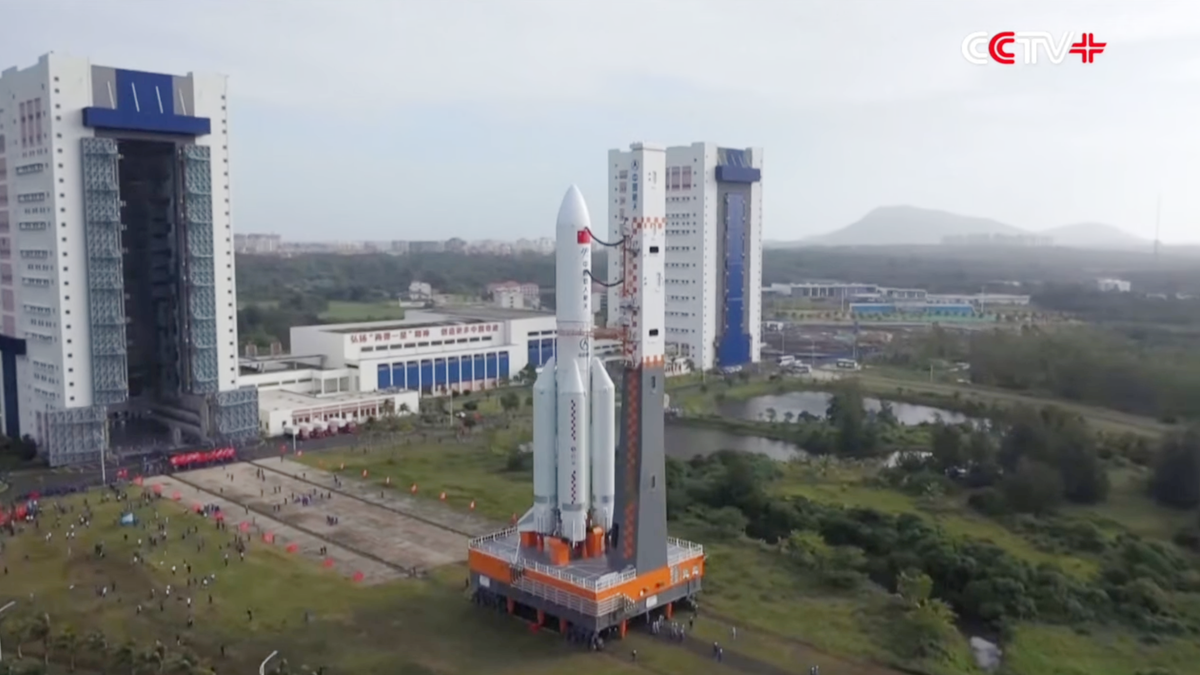
Another Problematic Launch Expected as China Seeks to Complete Its Space Station
Experts say it's a near certainty that China's Long March 5B rocket will perform an uncontrolled reentry following an expected launch next week.
 gizmodo.com
gizmodo.com
- Joined
- 21 January 2015
- Messages
- 12,150
- Reaction score
- 16,353
View: https://twitter.com/cnspaceflight/status/1586706307850981376
View: https://twitter.com/CNSpaceflight/status/1586716325488971776
Introducing Mengtian Laboratory Module
17.9m long
4m wide
~23 tonnes
~110 m3 pressurized volume
~32 m3 habitable
4 sub-modules: Pressurized, Payloads, Cargo airlock and Service Module
not less than 10 years of lifetime and can be extended
Oh wait, one more very cool thing: micro/nanosats deploying system through the robotic arm.
Mengtian also has 37 standard exposed payload adapters. See the quoted tweet for more info of the research facilities of China Space Station..
View: https://twitter.com/CNSpaceflight/status/1586716325488971776
- Joined
- 21 January 2015
- Messages
- 12,150
- Reaction score
- 16,353
View: https://twitter.com/cosmic_penguin/status/1587000494773440514
View: https://twitter.com/alexphysics13/status/1587001300503478272
Per the source of this tweet, the deployment orbit was 170 x 339 km and velocity at separation was 7.89 km/s:
View: https://twitter.com/alexphysics13/status/1587001300503478272
Oh boy that's a low perigee. The core stage will be coming down in a few days
- Joined
- 21 January 2015
- Messages
- 12,150
- Reaction score
- 16,353
- Joined
- 21 January 2015
- Messages
- 12,150
- Reaction score
- 16,353
China launched its final space station module. Well congrats, but it was done on a Long March 5B rocket again, sooo...
Time for uncontrolled re-entry bingo again! Where will it crash? Nobody knows!
View: https://twitter.com/KamepinUa/status/1587007047937171458
Recalling the score for the three previous missions:
Y3 - debris landed in Borneo, some within 100m of a village
Y2 - reentered over Indian Ocean
Y1 - debris landed in Cote d'Ivoire, damaging buildings in several villages
This mission, Y4: we'll see in a week or so.
View: https://twitter.com/planet4589/status/1586987858904186880
- Joined
- 21 January 2015
- Messages
- 12,150
- Reaction score
- 16,353
View: https://twitter.com/jremis/status/1587115588819849216#MENGTIAN CZ-5B R/B cataloged as object 54217. From first elements the decay will be be in around 7 to 12 days. The orbit is a little higher and more eccentric than for Wentian's launch.
- Joined
- 9 October 2009
- Messages
- 21,973
- Reaction score
- 13,626
- Joined
- 21 January 2015
- Messages
- 12,150
- Reaction score
- 16,353
- Joined
- 21 January 2015
- Messages
- 12,150
- Reaction score
- 16,353
View: https://twitter.com/sciguyspace/status/1587853654190686208
1&2 are the Skylab and Salyut 7 re-entries.
View: https://twitter.com/aerospacecorp/status/1587848989403189249
View: https://twitter.com/aerospacecorp/status/1587863768570023937
Ted Muelhaupt, of @AerospaceCorp, says that the Long March 5 rocket core is the size of two semi-trailer trucks, and 10 to 40 percent of the dry mass is expected to survive reentry. China's four LM-5s are the 3rd, 4th, 5th, and 6th largest uncontrolled reentries ever.
1&2 are the Skylab and Salyut 7 re-entries.
View: https://twitter.com/aerospacecorp/status/1587848989403189249
View: https://twitter.com/jeff_foust/status/1587858672373403654Our latest prediction for #CZ5B rocket body reentry is:
05 Nov 2022 05:10 UTC ± 13 hours
Reentry will be along one of the ground tracks shown here. It is still too early to determine a meaningful debris footprint. Follow here for updates: aerospace.org/reentries/cz-5…
In an @AerospaceCorp briefing, Ted Muelhaupt says the risk of any casualties from the upcoming CZ-5B renter is between 1:1000 and 1:230, far worse than the internationally accepted threshold of 1:10,000. But the risk to you individually, though, is very small: 6 in 10 trillion.
View: https://twitter.com/aerospacecorp/status/1587863768570023937
Casualty in this context means any injury, small to fatal. The risk is still not zero and is greater than internationally accepted threshold (as @jeff_foust mentioned), but you also have a better chance of winning the lottery.
- Joined
- 21 January 2015
- Messages
- 12,150
- Reaction score
- 16,353
View: https://twitter.com/cnsawatcher/status/1587867932188704771
View: https://youtu.be/FQNWeCI3L7o
First-person video of Mengtian laboratory cabin module docking with Tiangong Space Station (CSS). Full HD:
- Joined
- 21 January 2015
- Messages
- 12,150
- Reaction score
- 16,353
Check out this amazing imagery we just snapped of the Long March 5B rocket body currently hurtling uncontrolled back to earth. My job is pretty cool
View: https://twitter.com/AnnieHandmer/status/1587967423864791040
View: https://twitter.com/aerospacecorp/status/1587935951388831744
Our latest prediction for #CZ5B rocket body reentry is:
04 Nov 2022 23:17 UTC ± 10 hours
Reentry will be along one of the ground tracks shown here. It is still too early to determine a meaningful debris footprint. Follow here for updates: aerospace.org/reentries/cz-5…
- Joined
- 21 April 2009
- Messages
- 13,756
- Reaction score
- 7,696
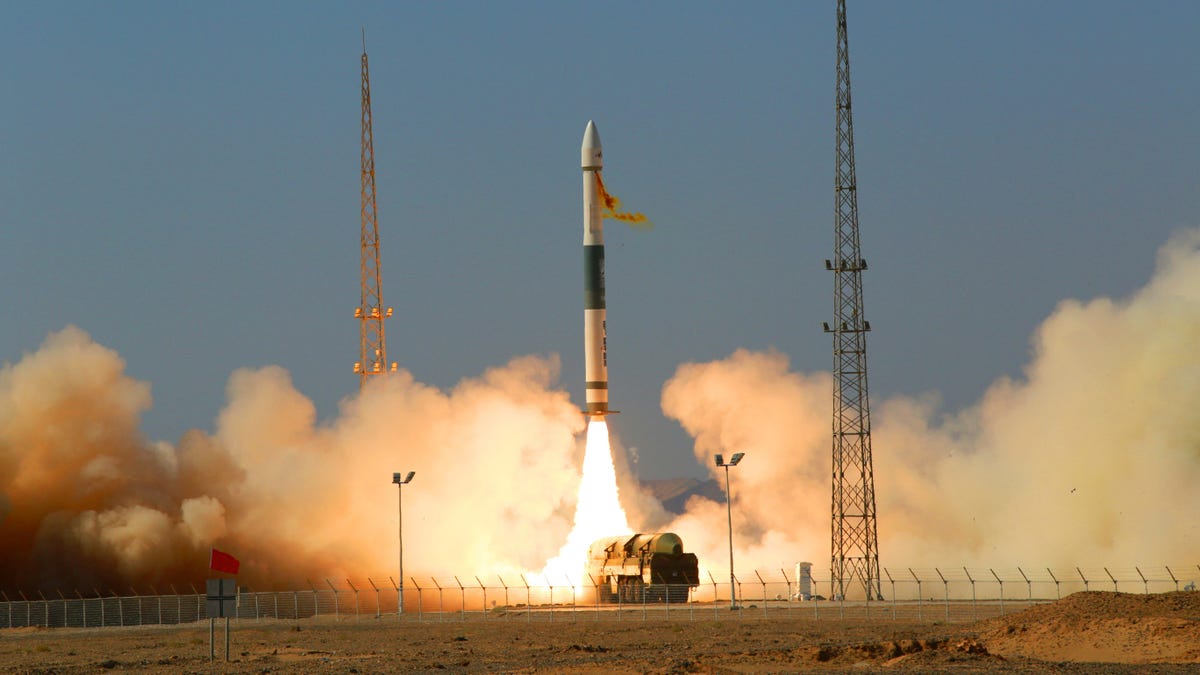
After 3 Months in Space, China's Mysterious Spaceplane Ejects Unknown Object
China's inaugural spaceplane mission in 2020 lasted for only two days, but this one just keeps on going.
 gizmodo.com
gizmodo.com
- Joined
- 21 January 2015
- Messages
- 12,150
- Reaction score
- 16,353
View: https://twitter.com/us_spacecom/status/1588479612610289664
#USSPACECOM can confirm the People’s Republic of China Long March 5B #CZ5B rocket re-entered the atmosphere over the south-central Pacific Ocean at 4:01am MDT/10:01 UTC on 11/4. For details on the uncontrolled reentry’s impact location, we once again refer you to the #PRC.
- Joined
- 21 January 2015
- Messages
- 12,150
- Reaction score
- 16,353
View: https://twitter.com/nasaspaceflight/status/1588532777313394688
NASA Administrator Bill Nelson released this statement Friday regarding debris from the Chinese Long March 5B rocket:
Once again, the People's Republic of China is taking unnecessary risks with the uncontrolled rocket stage reentry of their Long March 5B rocket stage. They did not share specific trajectory information which is needed to predict landing zones and reduce risk. This is the PRC's fourth uncontrolled reentry since May 2020, and each of these reentries have been the largest in last 30 years. It is critical that all spacefaring nations are responsible and transparent in their space activities and follow established best practices, especially, for the uncontrolled reentry of a large rocket body debris - debris that could very well result in major damage or loss of life.
jeffb
ACCESS: Top Secret
- Joined
- 7 October 2012
- Messages
- 1,280
- Reaction score
- 1,937
Chinese heavy lifter:
LTO: 27t
LEO: 70t
View: https://twitter.com/CNSpaceflight/status/1569685819363033094?t=FyyTuJlxhL_J1KelIjKWCw&s=19
LTO: 27t
LEO: 70t
View: https://twitter.com/CNSpaceflight/status/1569685819363033094?t=FyyTuJlxhL_J1KelIjKWCw&s=19
Similar threads
-
-
-
Queqiao - Chinese Lunar Communication Relay Satellite
- Started by Flyaway
- Replies: 11
-
-

